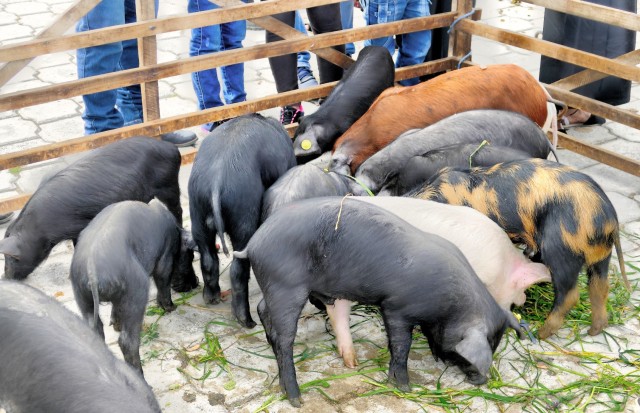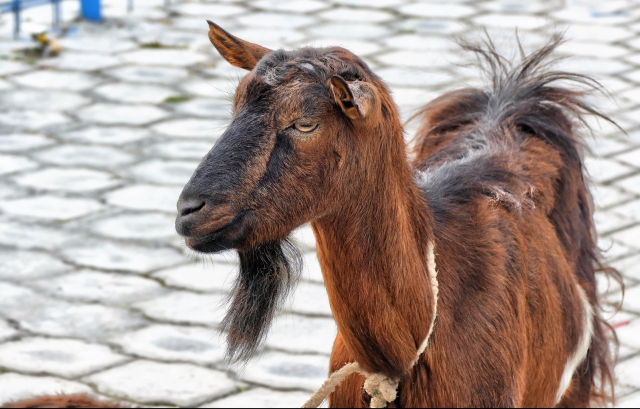It’s a mob scene every Saturday as tourists and locals alike flock to Otavalo’s famous Plaza de Ponchos, generally regarded as the biggest artisan market in South America. The plaza, a single square block during the week, balloons for blocks in every direction on market day.
There is a hubbub of European languages, English, and Spanish accents from every Latin nation as shoppers weave through aisles crowded with clothing, jewelry, and artwork.

Very few of them, however, will make it just a couple of miles north to the other major market on the same day: the weekly Otavalo animal market.
This one, in the community of Quinchuquí, is somehow more serious. Everyone has a good time, but it is not the county fair, and certainly not a petting zoo.
It is a place where people who make their living selling animals intersect with customers who want to raise animals, or eat them, or both.
Last fall, the local government spent more than a million dollars to build a sparkling new market to replace the old one, where both humans and beasts had slogged through mud and manure and sprinted dangerously across the multi-lane Pan American Highway. The new site is paved and subdivided among the species, with plenty of space for vendors selling food and other goods.
Only the animals are unchanged.

Most tourists visiting this market won’t be buying a pig or a duck, but it is a great place for snapping photos.
At the entrance, a young man lifts a stubborn calf that is determined to lie down. Nearby, three people struggle to stuff a squirming half-grown piglet into a burlap sack for the ride home—literally “a pig in a poke.”
The pig is winning.
There are chickens by the crate, by the truckload—baby chicks, fighting roosters, hens, and chickens of exotic breeds. Most of them sit morosely, with their feet tied, waiting to be hauled off. Ecuadorians consume upwards of 250 million chickens a year, not to mention some 3.6 billion eggs.
And because this is Ecuador, of course there are guinea pigs, a treasured national delicacy that fattens up fast, rich in protein. It seems that no one here ever had one as a pet in their second-grade classroom.

A section for sheep and goats houses a surprising diversity of species. Both are raised for meat, while sheep are also sheared and goats milked. It’s not uncommon to see a few goats led from house to house, to be milked while the customer waits. That’s fresh.
When I visited yesterday, there was even an alpaca.
While chickens easily dominate the avian section, other birds are well represented: turkeys, ducks, and geese, from chicks to adults.
Those cute rabbits will become stew, not Easter pets, so don’t get too attached.

On the sidelines, a man with a microphone and a truckload of bargain cookware works a curious crowd, more reminiscent of a Southern California swap meet than this vision of Noah’s Ark, run aground in the Andes.
Cows and calves are usually the first to sell out. A good milk cow can bring a thousand dollars or more. When you see a man or woman tending two or three cows, grazing on weeds alongside a road, it’s fair to assume that the cows represent the family’s entire net worth. They don’t own pastureland for cattle. Buying decisions aren’t made lightly.
And that’s why this picturesque market is a little on the serious side, and the stakes higher, than your average state fair.

